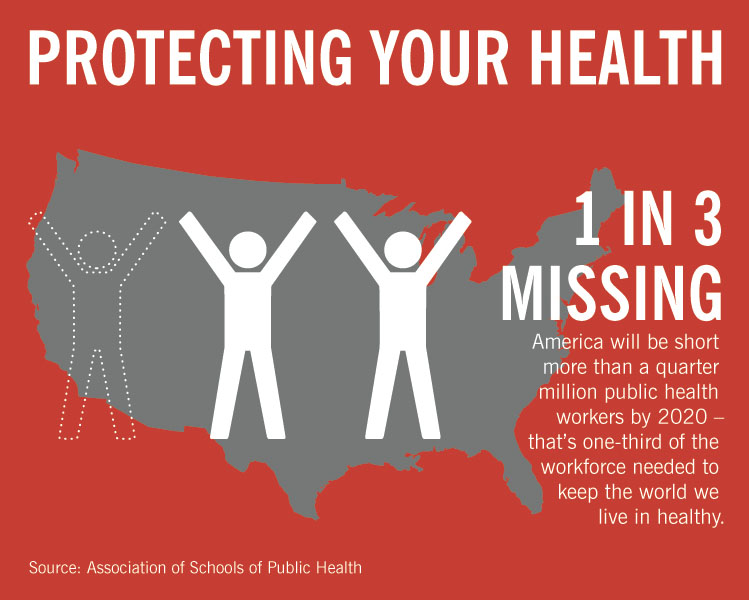Report Warns of Looming Public Health Workforce Crisis
250,000 Additional Public Health Workers Needed by 2020
A report by the Association of Schools of Public Health (ASPH) warns that the U.S. faces a major public health workforce crisis without an immediate influx of funding for recruitment and training of public health professionals. According to the report, more than 250,000 additional public health workers are needed by 2020. The report, which is a first of its kind assessment of the crisis, was presented on February 27 at Congressional briefing on Capitol Hill.
“A well-trained public health workforce is essential to our nation’s health and well-being,” said Michael J. Klag, MD, MPH, dean of the Johns Hopkins Bloomberg School of Public Health, and a participant in the ASPH briefing. “As this report illustrates, immediate action is needed to insure that the public health workforce is of sufficient size and adequately trained to fulfill its vital role.”
The crisis is a culmination of previously documented and forecasted shortages of public health physicians, public health nurses, epidemiologists, health care educators and administrators, as well as other contributing factors like an expected spike in retirement among public health workers. Nearly 110,000 public health workers—23 percent of the current workforce—will be eligible to retire over the next four years.
“Tackling the health implications of tobacco use, heart disease, obesity and physical inactivity—not to mention the threat of globally spreading infectious diseases—depends entirely on the availability of a well-trained public health workforce,” said Linda Rosenstock, dean of the UCLA School of Public Health and chair-elect of ASPH. “Unless we act now to increase the quality and quantity of public health professionals, we will soon be ill-equipped to identify public health crises and respond decisively.”
According to ASPH, more specialists will be needed in many public health sub-disciplines to address increasingly complex public health challenges. Additionally, the U.S. public health workforce must be adequately prepared to handle health threats that could emerge from other nations, such as the spread of infectious diseases.
In order to address projected workforce shortages, ASPH is calling for increased federal investment in public health education and training, in addition to the coordination of a centralized enumeration effort to adequately understand current and future workforce needs.
“An appropriate number of well trained public health professionals is critical in order to safeguard the health of our nation and our world,” said Harrison Spencer, president and chief executive officer of ASPH. “Our government and our schools of public health need to play a critical role in preventing this crisis.”
Additionally, increased recruitment, training and fellowship programs, financial aid assistance and expanded graduate-level opportunities are among the most urgent needs for averting this looming crisis. According to the analysis, schools of public health will have to graduate three times as many students over the next 12 years in order to meet the healthcare needs of the world in 2020.
The complete assessment is available online at www.asph.org/shortage.
Public Affairs media contact: Tim Parsons at 410-955-6878 or paffairs@jhsph.edu.
